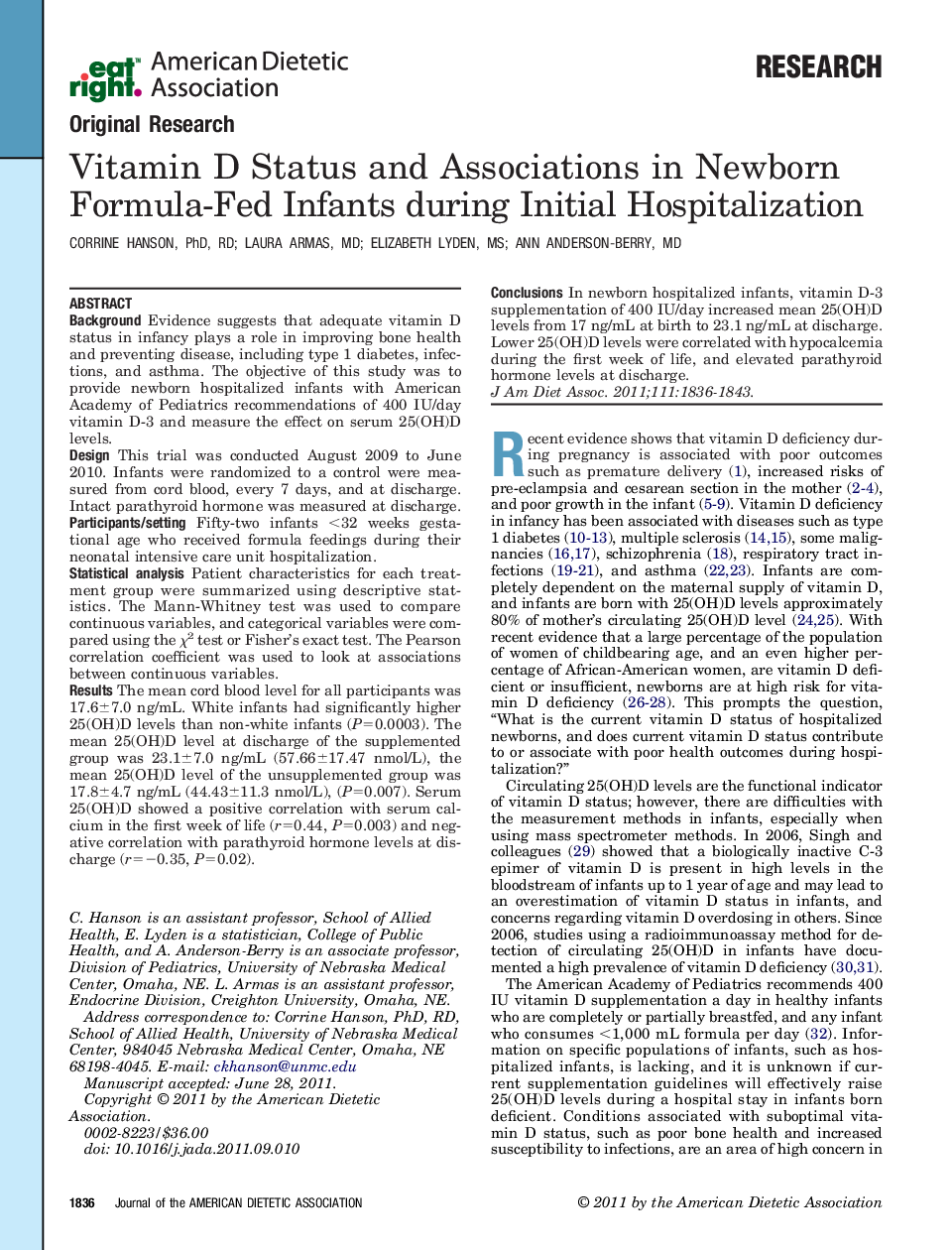| Article ID | Journal | Published Year | Pages | File Type |
|---|---|---|---|---|
| 2655126 | Journal of the American Dietetic Association | 2011 | 8 Pages |
BackgroundEvidence suggests that adequate vitamin D status in infancy plays a role in improving bone health and preventing disease, including type 1 diabetes, infections, and asthma. The objective of this study was to provide newborn hospitalized infants with American Academy of Pediatrics recommendations of 400 IU/day vitamin D-3 and measure the effect on serum 25(OH)D levels.DesignThis trial was conducted August 2009 to June 2010. Infants were randomized to a control were measured from cord blood, every 7 days, and at discharge. Intact parathyroid hormone was measured at discharge.Participants/settingFifty-two infants <32 weeks gestational age who received formula feedings during their neonatal intensive care unit hospitalization.Statistical analysisPatient characteristics for each treatment group were summarized using descriptive statistics. The Mann-Whitney test was used to compare continuous variables, and categorical variables were compared using the χ2 test or Fisher's exact test. The Pearson correlation coefficient was used to look at associations between continuous variables.ResultsThe mean cord blood level for all participants was 17.6±7.0 ng/mL. White infants had significantly higher 25(OH)D levels than non-white infants (P=0.0003). The mean 25(OH)D level at discharge of the supplemented group was 23.1±7.0 ng/mL (57.66±17.47 nmol/L), the mean 25(OH)D level of the unsupplemented group was 17.8±4.7 ng/mL (44.43±11.3 nmol/L), (P=0.007). Serum 25(OH)D showed a positive correlation with serum calcium in the first week of life (r=0.44, P=0.003) and negative correlation with parathyroid hormone levels at discharge (r=−0.35, P=0.02).ConclusionsIn newborn hospitalized infants, vitamin D-3 supplementation of 400 IU/day increased mean 25(OH)D levels from 17 ng/mL at birth to 23.1 ng/mL at discharge. Lower 25(OH)D levels were correlated with hypocalcemia during the first week of life, and elevated parathyroid hormone levels at discharge.
